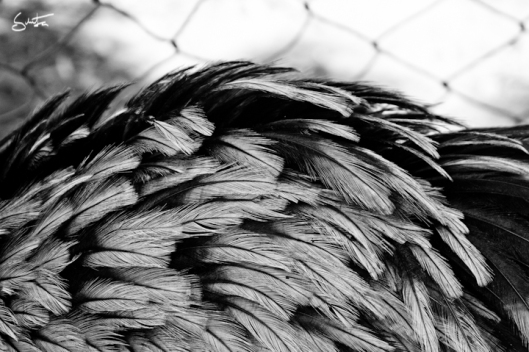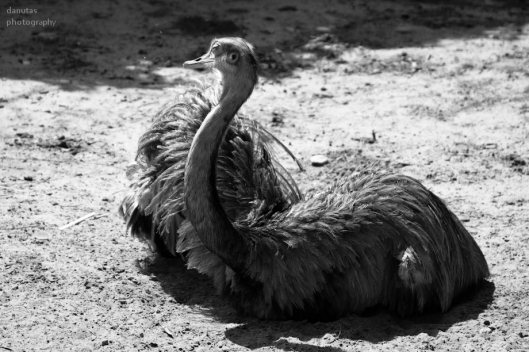Zaskoczony? Skonfundowany (jakież piękne słowo!)? Jak tez tak miałam, kiedy dowiedziałam się, ze w języku guarani – Ñandú, struś południowoamerykański, inaczej rhea, znaczy tyle co ‘wielki pająk’ (ñandú guazu). Plemię Guarani to dopiero ma wyobraźnię, prawda?! Podobno nazwa ta odnosi się do wyglądu tego nielotnego ptaka, kiedy podczas biegu rozkłada swoje ‘włochate’ skrzydła. Z kolei, IndianieQuechua, zamieszkujący regiony Andów, nazywają nandu – ‘suri’.
Surprised? Confused? I was, when I learned that in the language of Guarani tribe – Ñandú, South American ostrich or rhea, means the same as ‘big spider’ (ñandú guazu). Guarani people have great imagination, don’t they?! Apparently, this name refers to the appearance of the flightless bird during running, when it spreads its ‘hairy’ wings. Quechua Indians, living in regions of the Andes call it- ‘suri’.
Okazuje się jednak, ze ptak ten wcale nie jest strusiem, ale tylko jest do strusia podobny, choć o wiele mniejszy. Duże osobniki ‘Rheaamericana’ (Greater Rhea) mogą mierzyć do 170 cm i ważyć 40 kg (odmiana Darwin’s or Lesser Rhea (Rhea pennata)’, jest mniejsza), podczas gdy strusie afrykańskie są ponad 2-metrowe i waza o wiele więcej niż 100 kg. Nandu, w odróżnieniu od innych ptaków, posiada tylko 3 palce.
It turns out, however, that these birds are not ostriches, but only are similar to their African cousins, though much smaller. Large individuals ‘Rhea americana’ or Greater rhea, can measure up to 170 cm and weigh 40 kg (the ‘Lesser rhea’ or Darvin’s rhea, or Rhea pennata’ is, as name suggests, smaller), while African ostriches are more than two-meters tall and weight much more than 100 kg. Nandu, unlike the other birds, has only three fingers.
Większa odmiana nandu preferuje niziny: pampy i chaco, podczas gdy mniejsze nandu może żyć na wysokości do 4.500 m, na pustyniach i stepach wysokogórskich. Nandu zwykle są wegetarianami, choć jadają również insekty i małe płazy. Czasem jednak, wiążą się w stada i atakują duże zwierzęta, jak jelenie czy krowy!
The Greater rhea prefers lowlands to live: Pampas and Chaco, while the Lesser rheas can live at altitudes up to 4,500 meters on deserts and scrublands. Nandu usually are vegetarians, though also eat insects and small reptiles. Sometimes, however, gathered in the herd, they attack large animals, such as deer or a cattle!
Niestety, w ostatnich latach populacja tych ptaków znacznie się zmniejszyła i dziś sięga granicy gatunków zagrożonych. Ja widziałam je w zoo, podczas wyprawy na Salar de Uyuni i na terenie lotniska w Santa Cruz:) Ludzie polują na nandu dla pierza, skory i mięsa. Nie próbowałam, ale pamiętam, iż w Uyuni serwowano je obok steków z lamy.
Unfortunately, in recent years the population of these birds has reduced considerably, and today is approaching vulnerable status. I’ve seen them in the zoo, during my trip to Salar de Uyuni and … on the airport grounds in Santa Cruz:) People hunt for Nadu’s feathers, skin and meat. Haven’t tried it, but I remember it was served in Uyuni, beside llama’s steaks.

